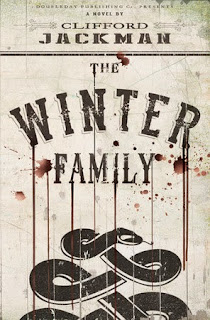Wicked Stitch - Amanda Lee
Wicked Stitch
An Embroidery MysteryAmanda Lee
Obsidian
The night before the Faire begins, merchants are setting up
their booths. Marcy and her boyfriend,
detective Ted Nash, arrive late in the evening to being their setup. Glancing into the booth next door, Marcy
spots something odd in the back corner.
She’s shocked to discover Clara, on her side on the floor, with a
knitted scarf twisted around her neck. The
paramedics say there was nothing Marcy could have done, but Nellie still blames
Marcy and, in her grief, begins hurling accusations. Not long after, Marcy’s booth is vandalized
during the night, leaving her shirts, collars, and cuffs cut to shreds. None of the other booths were touched, so
clearly, this is directed at Marcy. Is
it revenge, or just a warning?
The author does a great job of describing the atmosphere of
the faire. It’s obviously a venue with
large crowds of people in costume; anyone might be lurking behind a mask. The faire also allows for a large influx of
new characters, potential motives, and possible suspects. As a result, we spend a lot of time with
Marcy at the Faire, shopping, chatting, and meeting new people. Many people are
supposed to be acting ‘in character,’ especially those given the foreboding MacBeth
lines. It all makes sorting out who’s
acting suspiciously and who’s just acting, that much more difficult.
As the story opens, there is no current open homicide in
Tallulah Falls, so Ted is working on a five-year-old cold case. A detective has to keep an open mind and deal
with facts. Any mystery reader worthy of
the name knows that this cold case will somehow figure into current events in
town. It does, of course, but not in
quite the way I expected. Secondary
characters never get left out: their lives progress and change and the author
is careful to make that clear. This mystery has a great backdrop, good
characters, and a few red herrings to keep things moving. Whether you’re a newcomer to the series
(listed below) or have been reading from the start, you’ll enjoy this outing.
Rating: 7
April 2015
ISBN# 978-0-451-46740-9 (paperback)Previous Titles:
THE QUICK AND THE THREAD
STITCH ME DEADLY
THREAD RECKONING
THE LONG STITCH GOOD NIGHT
THREAD ON ARRIVAL
CROSS-STITCH BEFORE DYING
THREAD END



